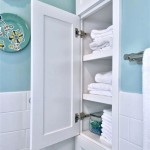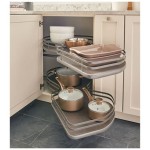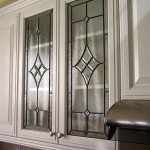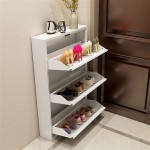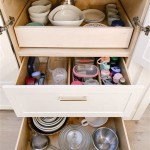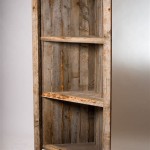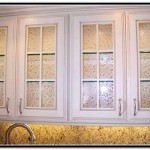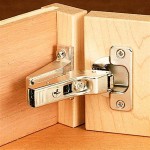Do You Need To Primer Cabinets Before Painting?
Painting cabinets is a common home improvement project undertaken to refresh the look of a kitchen or bathroom without the expense of a full renovation. However, a successful cabinet painting project necessitates careful preparation, and a central question often arises: Is primer essential? The answer, while seemingly simple, is nuanced and depends on several factors. Understanding these factors is crucial for achieving a durable and aesthetically pleasing finish.
Primer serves as an intermediary layer between the cabinet surface and the topcoat of paint. Its primary function is to create a uniform and receptive base for the paint, promoting adhesion and enhancing the overall appearance and longevity of the finished product. It’s important to understand that primer isn’t just an optional step; in many cases, it's a vital component of a successful cabinet painting project.
When Primer Is Absolutely Necessary
Certain cabinet materials and conditions practically demand the application of primer before painting. Ignoring this step can lead to a host of problems, ranging from poor paint adhesion to unsightly imperfections in the final finish.
Raw Wood Cabinets: Cabinets constructed from raw, unfinished wood are highly porous. This porosity means that the wood will readily absorb paint, leading to uneven color saturation and requiring multiple coats for adequate coverage. Primer seals the wood's surface, reducing its absorbency and creating a smooth, consistent base for the paint. Without primer, the paint may sink into the wood grain, resulting in a dull, uneven appearance. Furthermore, some woods contain tannins that can bleed through the paint, discoloring the finish. A quality primer acts as a barrier, preventing tannin bleed-through.
Previously Oiled or Varnished Cabinets: Surfaces that have been previously treated with oil-based paints, varnishes, or lacquers present a significant challenge for new paint adhesion. These coatings create a slick, non-porous surface that paint struggles to grip. Sanding can help roughen the surface and improve adhesion, but primer provides a crucial additional layer of bonding. Specifically, bonding primers are formulated to adhere to these difficult surfaces, creating a sturdy foundation for the topcoat. Skipping primer on these surfaces often results in peeling, chipping, or scratching of the paint.
Cabinets with Stains or Damage: Cabinets that have been stained, have water damage, or exhibit significant imperfections benefit greatly from priming. Stains can bleed through paint, altering its color and creating unsightly blemishes. Water damage can leave behind discoloration or compromise the wood's integrity. Primer seals these imperfections, preventing them from showing through the paint and providing a uniform surface for the topcoat. In cases of minor damage, such as small dents or scratches, primer can help fill these imperfections, creating a smoother, more even surface.
Dark Colored Cabinets Being Painted a Lighter Color: When transitioning from dark-colored cabinets to a significantly lighter hue, primer is essential. The dark color underneath can bleed through the lighter paint, requiring numerous coats to achieve the desired color saturation. A tinted primer, matched to a shade close to the final paint color, can significantly reduce the number of topcoats required and ensure a uniform, accurate color.
Benefits of Using Primer, Even When Not Strictly Required
Even if the specific cabinet material or condition doesn't *technically* necessitate primer, its use can still provide several advantages and contribute to a more professional and durable finish.
Improved Adhesion: Primer creates a stronger bond between the cabinet surface and the paint, reducing the likelihood of peeling, chipping, or scratching. This is particularly important in high-traffic areas, such as kitchens, where cabinets are frequently touched and exposed to wear and tear. A better bond directly translates into a longer-lasting paint job.
Enhanced Paint Coverage: Primer creates a uniform, consistent surface that allows the paint to spread more evenly. This results in better color saturation and reduces the number of coats required to achieve the desired opacity. Less paint used means cost savings and a smoother final finish, free from visible brushstrokes or roller marks. The savings in paint also outweigh the cost of the primer in many cases.
Prevention of Tannin Bleed-Through and Stain Blocking: As mentioned previously, certain woods contain tannins that can leach through paint, discoloring the finish. Similarly, existing stains on the cabinets can bleed through, creating unsightly blemishes. Primer acts as a barrier, preventing these substances from seeping through and ensuring a clean, consistent color.
Creates a Smooth Surface: Even if the cabinet surface appears smooth, primer can fill in minor imperfections, creating a more even base for the paint. This results in a smoother, more professional-looking finish. Some primers are specifically formulated with filling properties, designed to hide imperfections and create a flawless surface.
Choosing the Right Primer for Cabinets
Selecting the appropriate primer is as crucial as deciding whether or not to use it. Different primers are formulated for specific purposes and materials. Using the wrong primer can negate its benefits and even worsen the outcome of the painting project.
Oil-Based Primers: Oil-based primers are known for their excellent adhesion, stain-blocking properties, and ability to seal porous surfaces. They are particularly effective on raw wood cabinets and cabinets with existing stains or varnishes. However, oil-based primers have a strong odor, require mineral spirits for cleanup, and take longer to dry than water-based primers. They are also less environmentally friendly.
Water-Based (Acrylic) Primers: Water-based primers are low-odor, easy to clean up with soap and water, and dry relatively quickly. They are a good choice for cabinets that are in good condition and do not require heavy-duty stain blocking. Acrylic primers offer good adhesion and provide a smooth base for the paint. They are also generally more flexible than oil-based primers, making them less prone to cracking or chipping over time.
Shellac-Based Primers: Shellac-based primers are known for their exceptional stain-blocking capabilities and their ability to adhere to a wide range of surfaces, including glossy finishes. They are particularly effective at sealing knots in wood and preventing tannin bleed-through. Shellac primers dry very quickly but have a strong odor and require denatured alcohol for cleanup. They are also more brittle than oil-based or water-based primers and may not be the best choice for cabinets that are subject to a lot of impact.
Bonding Primers: Bonding primers are specifically formulated to adhere to difficult surfaces, such as laminate, melamine, and previously painted or varnished cabinets. They contain special additives that create a strong bond between the surface and the paint. Bonding primers are essential for painting cabinets made from these materials, as standard primers may not provide sufficient adhesion.
Tinted Primers: Tinted primers are designed to be tinted to a shade close to the final paint color. This is particularly useful when transitioning from dark-colored cabinets to a lighter hue, as it reduces the number of topcoats required to achieve the desired color saturation. Tinted primers can save time and money by improving paint coverage and ensuring a uniform, accurate color.
Before selecting a primer, it's crucial to identify the cabinet material, assess the condition of the surface, and consider the desired outcome of the painting project. Consulting with a paint professional can provide valuable guidance in choosing the right primer for your specific needs.
In conclusion, while not universally required, using primer on cabinets before painting is often a worthwhile investment. It enhances adhesion, improves paint coverage, prevents stain bleed-through, and creates a smoother, more durable finish. The specific type of primer required depends on the cabinet material, the condition of the surface, and the desired outcome of the painting project. By carefully considering these factors and selecting the appropriate primer, homeowners can achieve a professional-looking cabinet painting project that will last for years to come.

How To Prime Cabinets For A Smooth Finish The Turquoise Home

Refinish Kitchen Cabinets With Kilz Restoration Primer

How To Prime Cabinets For A Smooth Finish The Turquoise Home

How To Paint Kitchen Cabinets A Step By Guide Confessions Of Serial Do It Yourselfer

How To Paint Kitchen Cabinets A Step By Guide Confessions Of Serial Do It Yourselfer

How To Paint Kitchen Cabinets From A Diyer Who Has Done It 3 Times

How To Prime Cabinets For A Smooth Finish The Turquoise Home

How To Paint Laminate Cabinets Without Sanding The Palette Muse

The Best Primer For Cabinets Erin Zubot Design

A Step By Guide To Painting Kitchen Cabinets With Kilz Primer Blog
Related Posts

